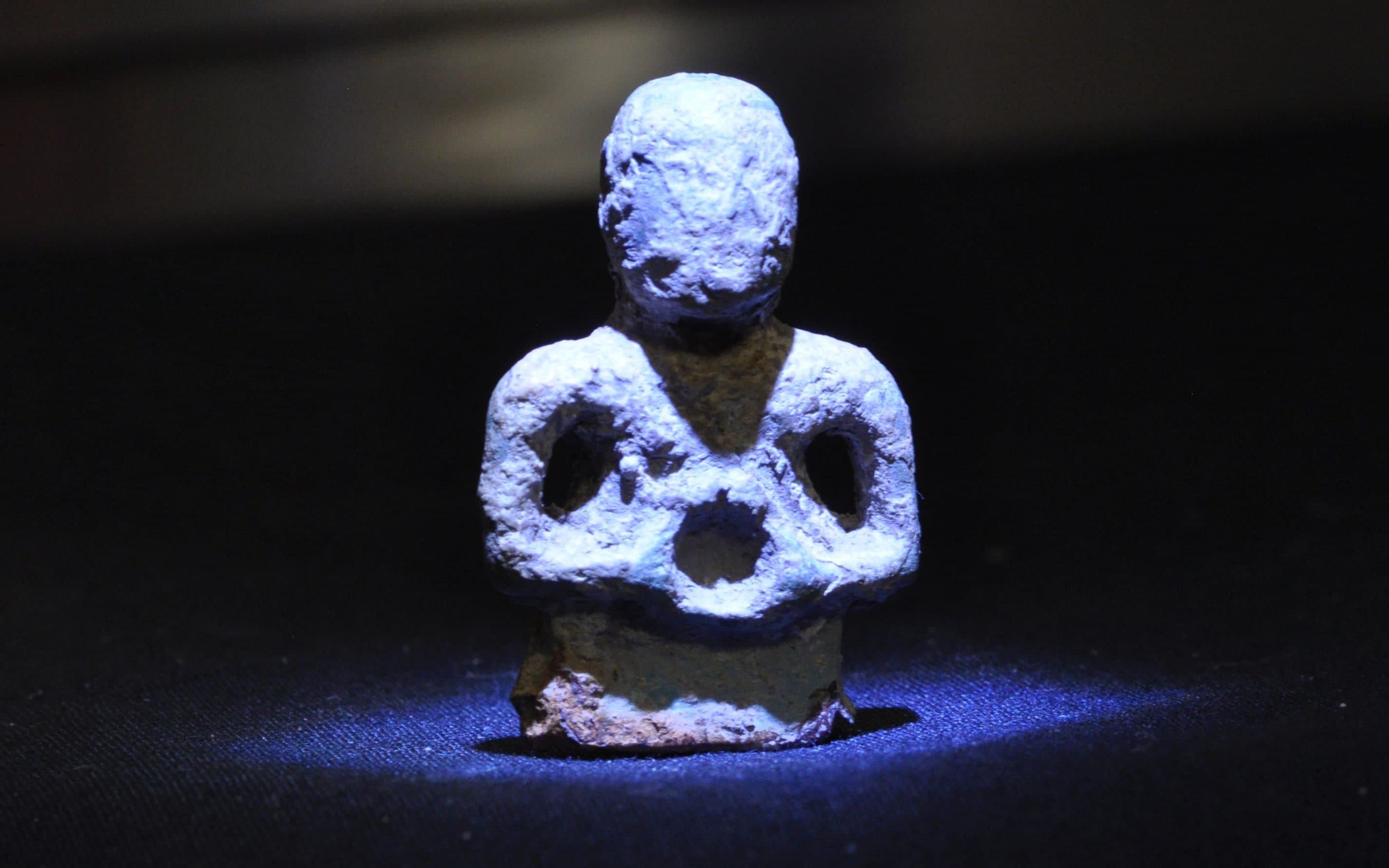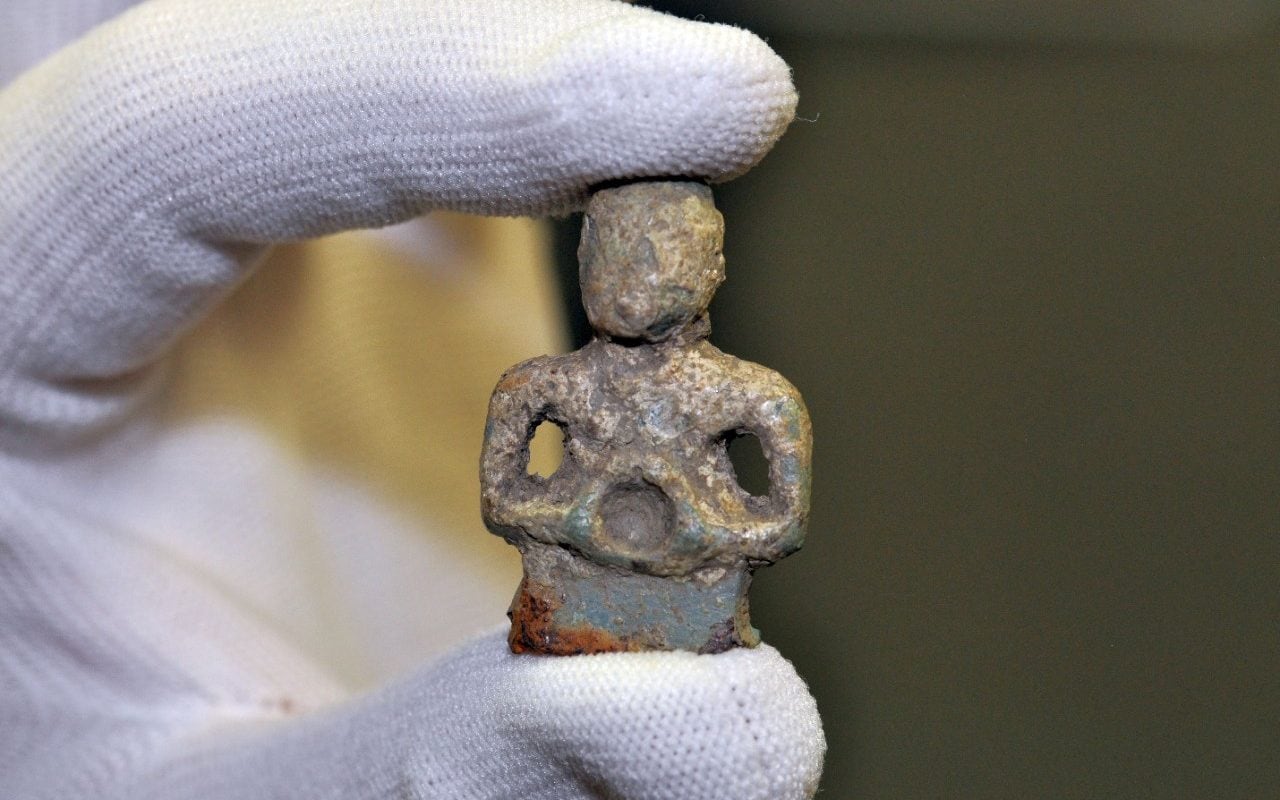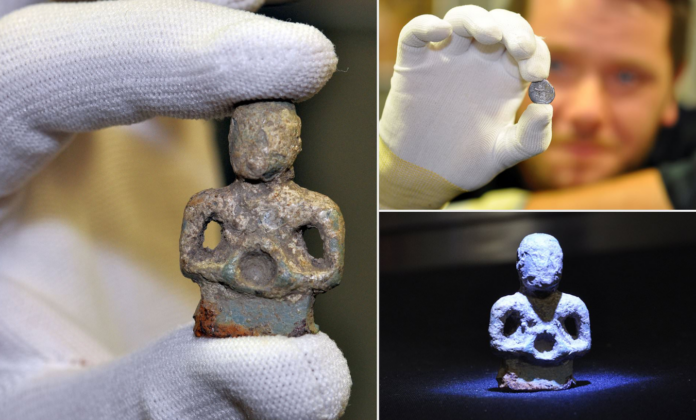A remarkable archaeological find has emerged from the farmlands of Cambridgeshire: a rare 2,000-year-old metal figurine representing a Celtic fertility deity. Discovered in an ancient Roman settlement, this small yet significant artifact sheds light on the intricate connections between the indigenous people of Britain and their Roman occupiers during the first centuries AD. This discovery not only enhances our understanding of historical religious practices but also highlights the cultural exchange between these ancient societies.
Discovery of the Figurine

Archaeologists working on the National Trust’s Wimpole Estate unearthed the two-inch metal figurine, which depicts a horned Celtic god known as Cernunnos. The figurine, dating back to the second century AD, was found in a rural settlement that transitioned from the Late Iron Age to the Early Roman period. Notably, this is the only metal representation of Cernunnos known in Britain, with similar depictions previously found only in stone carvings.
Significance of the Figurine
The discovery of this figurine provides compelling evidence of the cultural and religious interactions between the Romans and the Celtic tribes of Britain. The figure’s face has been worn away over the millennia, yet its shape and the presence of a ‘torc’—a neck ring associated with Cernunnos—reveal its identity. According to Stephen Macaulay, Deputy Regional Manager at Oxford Archaeology East, the worn appearance of the figurine can be likened to finding a weathered version of Jesus on a crucifix. This comparison underscores the significance of the figure as a symbol of the Celts’ spiritual life.

Macaulay emphasizes the importance of this discovery in illustrating the Romans’ acceptance of other religions. The Romans often incorporated local deities into their own religious framework, a practice evident in this figurine’s blending of Celtic and Roman elements. This approach allowed them to maintain local traditions while establishing their control.
Insights into Roman-British Relations
The Wimpole Estate settlement, where the figurine was found, appears to have been a hub of significant trade and cultural exchange. Alongside the figurine, archaeologists uncovered around 300 metal objects, including coins, horse harness fittings, Roman military uniforms, a spearhead, an axe head, key handles, brooches, and a ring. These artifacts provide a snapshot of daily life and the extent of Roman influence in the region.

Shannon Hogan, National Trust Archaeologist for the East of England, highlights the broader implications of the find. She notes that while the figurine is Roman in origin, it symbolizes a Celtic deity, demonstrating the persistence of indigenous religious and cultural symbols in Romanized societies. The artifact serves as a testament to the complex interplay between native and Roman cultures during this period.
Conclusion
The unearthing of the 2,000-year-old Cernunnos figurine at the Wimpole Estate is a groundbreaking discovery that enriches our understanding of ancient British and Roman interactions. As this unique artifact undergoes cleaning, cataloging, and analysis, it will play a central role in future exhibitions at Wimpole, offering visitors a tangible connection to the spiritual and cultural dynamics of ancient Britain. This find not only reveals the reverence of the Celts for their deities but also exemplifies the Romans’ flexible approach to integrating and respecting the diverse beliefs of their empire.
